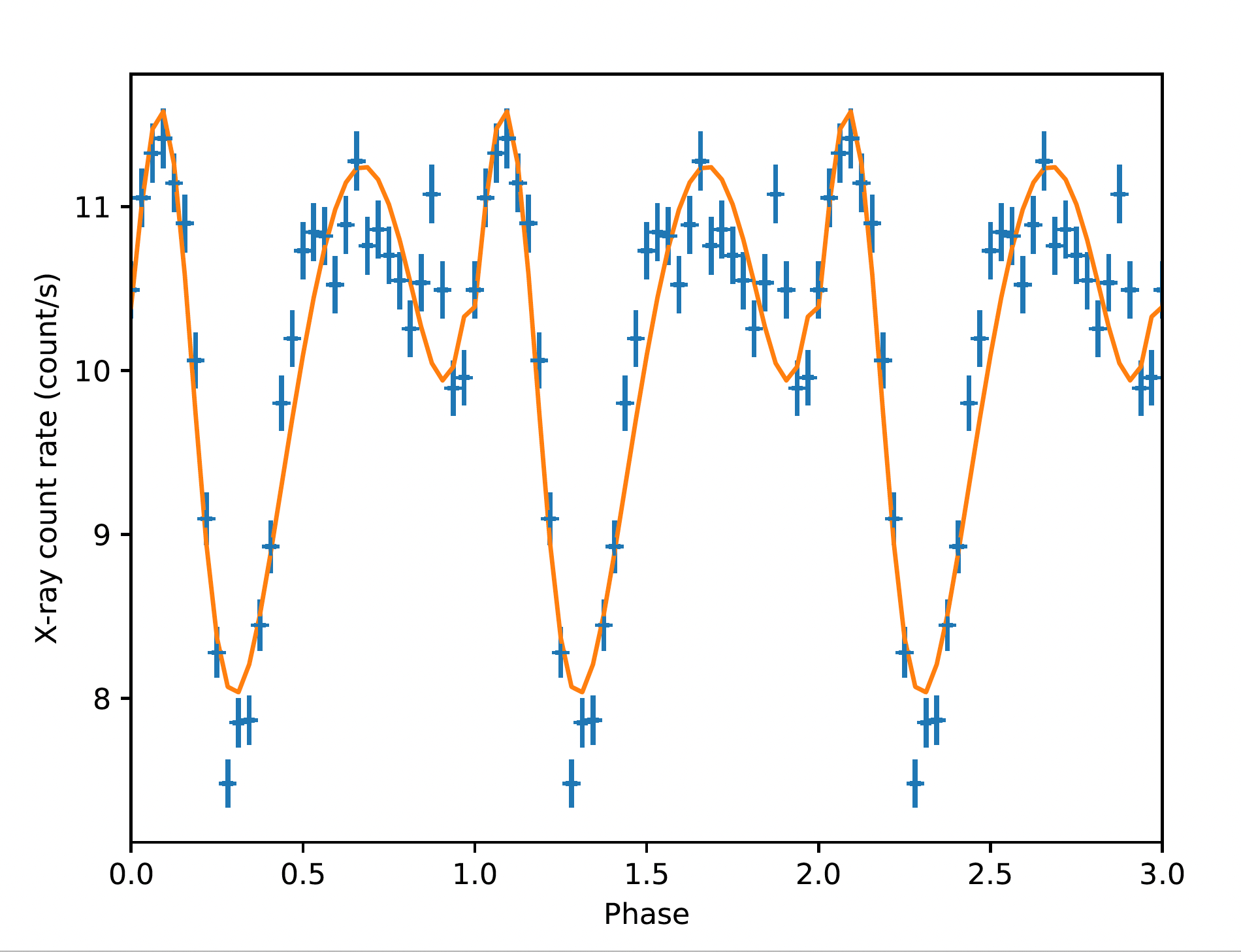NICER / ISS Science Nugget
for November 18, 2021
NICER Takes the Pulse of an SMC BeXRB
One of the Milky Way's nearest neighbors is the Small Magellanic Cloud, a "dwarf galaxy" visible to the naked eye in the Southern Hemisphere. About 200,000 light-years distant, the SMC is very different from our own Milky Way, not only being smaller and having an irregular shape, but also in that it contains different populations of stars. One type of object much more common in the SMC is the so-called Be X-ray Binary (BeXRB), a star system that consists of a B spectral-type star -- a blue star showing strong emission lines, hence "Be" - and a compact companion, such as a neutron star, white dwarf, or black hole. Be stars spin rapidly, ejecting material into large, equatorial, circumstellar disks. When the compact companion interacts with the material in this disk, usually once per orbit, X-rays are generated. NASA's Swift observatory surveys the SMC in X-rays once per week to look for these signature events, for a project known as S-CUBED.
On Nov. 7th, S-CUBED detected a previously known BeXRB in outburst. SMC X-ray Pulsar (SXP) 15.6 is so named because the binary hosts a neutron star, and its spin rate is revealed by regular modulations in X-ray brightness; in this case, the period was known to be 15.6 sec. NICER received a request, from the Swift Mission Operations Center's Dr. J. Kennea (who also works on S-CUBED), to observe SXP 15.6, to see if the signature pulsation period could be detected and whether it had changed since it was last measured in 2016. NICER observations clearly detect the period, at 15.64 sec, a value almost identical to that reported five years ago. NICER detects the pulsation so clearly that it's possible to see small structure and asymmetries in the X-ray emission as the neutron star spins (see Figure). Essentially, this is not simply a "lighthouse beam," but complex emission from multiple regions on and around the neutron star.
During BeXRB outbursts, material from the circumstellar disk "spins up" the neutron star, so one key measurement for NICER will be to track this spin evolution. Such measurements can reveal key properties of the system, including - if the outburst lasts long enough - the parameters of the binary orbit.
Initial results from these NICER observations were published on Nov. 21 by M. J. Coe et al. as Astronomer's Telegram #15054.

Figure: Three cycles (blue crosses; data repeated for clarity) of the modulated X-ray count rate seen by NICER from SXP 15.6. The orange trace is a simple model that attempts to reproduce the pulse profile with a pair of Gaussian functions.
<< Previous
Main Index